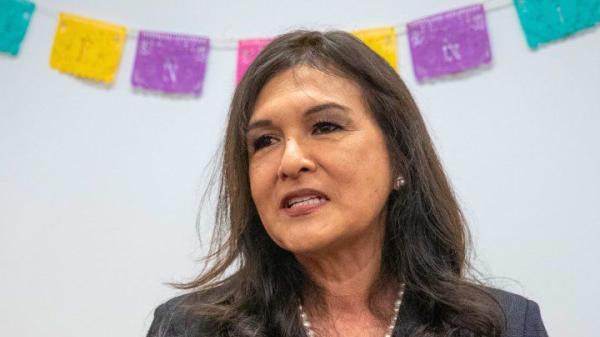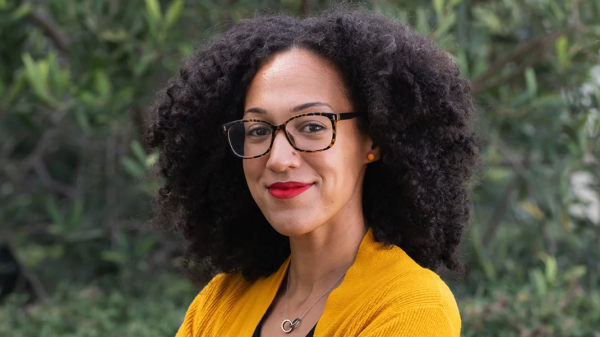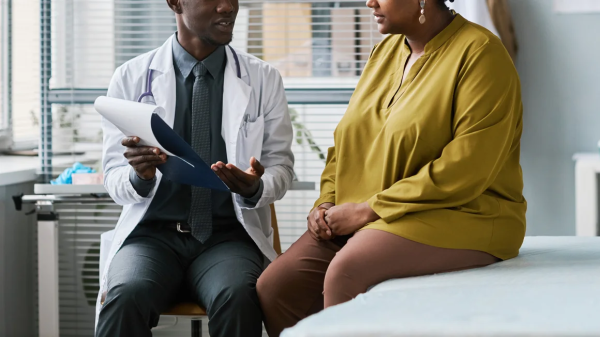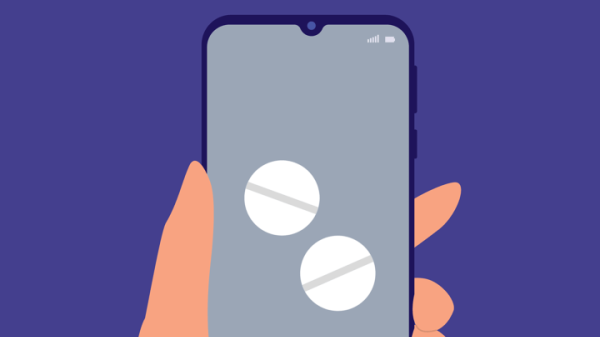Crucial questions, say our experts, will be when and where to get vaccinated and which vaccine will be best for you.
By Ann Brody Guy UCSF Magazine Winter 2021
Published December 8, 2020
Vaccines to protect against COVID-19 are being developed with unprecedented speed and technical skill, but also amid a culture of mistrust and conflicting information. As the U.S. Food and Drug Administration (FDA) begins reviewing emergency use authorization for the Pfizer and Moderna vaccines, and AstraZeneca’s trial data makes headlines, we asked several of our experts for a personal take on what will convince them that a vaccine is safe for them and their families.
Assessing personal risk when deciding how soon to get vaccinated
JOEL ERNST, MD
Professor of medicine; chief, Division of Experimental Medicine
To be clear: I would say it’s a personal decision on when to be vaccinated, not whether to be vaccinated. It’s a societal imperative if we are to overcome this pandemic that all of us who can get vaccinated must get vaccinated. The recent data on safety and efficacy of three of the COVID-19 vaccines indicate that some of us will make that decision soon.
To make sure a vaccine is safe for everyone, I’d personally feel most comfortable with six months of data from phase III testing*. Knowing that a vaccine has been tested in a broad population of people – not just 21-year-old, physically fit volunteers, but also people with underlying health conditions – will reassure me that it’s safe even from the perspective of rare side effects.
* What is Phase III Testing?
“These are rigorous investigations, closely monitored for safety and for efficacy; they ensure that the vaccine’s side effects are minor and that they resolve, and that the vaccine prevents COVID-19. They also measure the strength and duration of the immune response in a large, randomized cohort.”
The emergency approval process currently underway for two vaccines is based on two months of phase III testing data. That is the recommendation of the FDA’s independent advisory committee for an emergency situation like we’re in now. We want to end the pandemic, so we want to get things done as fast as possible. That’s why two months is not unreasonable for people who have the highest risk of COVID-19 exposure and the lowest risk of adverse vaccine reactions – people who have more to gain from a vaccine – such as primary care providers and first responders. If I were in this group, I would say, “OK, two months will do for me.”
But for people at lower risk of contracting COVID-19 – those who can work from home, for example – but at higher risk of medical complications, then I think when to get vaccinated becomes a personal decision. They may want to wait until we accumulate more information from longer follow-up times – perhaps six months from the start of the phase III trials.
Understanding different options; reaching the global population
JAIME SEPÚLVEDA, MD, DSC, MPH
Professor of epidemiology and biostatistics; Haile Debas Distinguished Professor of Global Health Sciences; executive director, UCSF Institute for Global Health Sciences
There are currently 13 vaccines in phase III trials. Three of them – those made by Pfizer, Moderna, and AstraZeneca* – have completed their efficacy and safety studies, and two are in the process of seeking emergency use authorization from the FDA. According to information the manufacturers provided, different age groups and ethnicities were included in the vaccine trials. Based on those reports, it seems that even in people over 70 years of age, the response is very positive. However, it is important to have peer-reviewed scientific publications confirming both the efficacy and the safety of the different vaccines.
* Promising Trial Results
“The Pfizer and Moderna formulations both showed remarkable effectiveness – 94% to 95% – against COVID-19. AstraZeneca reported variable efficacy rates, depending on the initial dosage used. Questions have been raised about their dosage protocols, so they may need to rerun their phase III trial.”
Vaccines produced in China and Russia have apparently been applied to selected local populations. Some experts think this rushed preliminary approval carries risks since phase III trials have not been completed.
The ideal vaccine would accomplish three endpoints: prevent infection, reduce the severity of the illness if someone does get the disease, and interrupt the chain of transmission. It is unlikely we will have one single vaccine doing all three. It is possible that different vaccine technologies may offer different advantages with respect to these distinct goals.
Equal allocation of vaccines globally will be of paramount importance to ending the pandemic because as long as SARS-CoV-2 exists somewhere, it will be everywhere. The World Health Organization has proposed guidelines to ensure that vulnerable populations have access to vaccines and has participated in creating a platform for funding and distributing a COVID-19 vaccine globally. However, reaching at least 70% of the global population with two doses of vaccine – an estimate of the vaccination coverage needed to achieve worldwide herd immunity – will be a major challenge.
Building trust across communities
STACY TORRES, PHD
Assistant professor of social and behavioral sciences, UCSF School of Nursing
I have an autoimmune disease, Sjögren’s, which puts me in a higher-risk group that may be encouraged to receive the vaccine before younger, healthier people. So I monitor the safety of vaccine development and distribution from a very personal place. To achieve the vaccinated population percentages that would allow us to more safely resume in-person interactions, we will need a concerted effort to overcome growing distrust of vaccines among the public.
For example, if I saw Dr. Anthony Fauci take the vaccine on TV, I’d feel much more comfortable taking the vaccine myself and urging family members to comply, especially those who are vulnerable to COVID-19 complications and death due to underlying medical conditions and/or advanced age. I point to Dr. Fauci as one exemplar of a trusted public health expert, but we will need to enlist a wide range of trusted partners* to work with communities of color and those across a range of abilities, ages, legal statuses, sexualities, etc., to instill confidence in the vaccine and help keep the complex distribution process exquisitely transparent.
* Partners Will Be Key
“Community health groups such as La Clínica de la Raza and the Native American Health Center, organizations like the youth empowerment group Homies Empowerment, and Black churches in East Oakland are just a few examples of partners we must work with to build trust among and disseminate information within communities that have experienced disproportionately high rates of COVID-19.”
Relying on multiple independent reviews
SUSAN BUCHBINDER, MD
Clinical professor of medicine, epidemiology, and biostatistics; director, Bridge HIV, San Francisco Department of Public Health
I will feel confident that a vaccine is safe after multiple independent groups have reviewed the safety data. Here’s how it works for any vaccine seeking emergency approval:
First, an independent group of experts, the Data and Safety Monitoring Board, reviews safety and efficacy data from the phase III vaccine trials. Then the FDA staff and their independent vaccine-advisory committee do their own reviews. Safety is one of the FDA’s top priorities when the agency considers whether to recommend that emergency use authorization be granted to a vaccine, including for COVID.
The Centers for Disease Control and Prevention’s advisory group, the Advisory Committee on Immunization Practices, also reviews the data in order to make recommendations about which populations should be first in line to receive the vaccine.
Finally, in California, we have an independent group of scientists and public health experts who will also review the safety and efficacy data before distribution begins. And then the data will be published, so we will all be able to review them. With all of those layers of review, I feel confident that a vaccine that is rolled out in California will be safe and effective for use.
That said, it’s worth addressing the popular notion that as soon as we have a vaccine, life will go back to “normal.” The ultimate achievement of herd immunity – population-wide protection – will rely on whether and to what extent the vaccine keeps people from being infectious. We know that some of the vaccines reduce the virus’s severity – fewer people who got the vaccine got sick than those who received the placebo. We will need some other studies, currently being planned, to tell us whether it is also keeping people who become infected from passing the virus on to others. We don’t have all that data yet. So for now, we are going to need both a vaccine that induces high levels of protection against infectiousness, and a population willing to receive a vaccine*.
* Hurdles to Herd Immunity
“We will likely still need other interventions, such as masking and social distancing, to fully achieve herd immunity, particularly if the proportion of people who receive the vaccine is low.”
Vaccine seeks
emergency approval
Data and Safety Monitoring Board:
-
reviews safety and efficacy data from the phase III vaccine trials
FDA staff and their independent vaccine-advisory committee:
-
both do their own reviews
-
safety is one of the FDA’s top priorities when recommending that emergency use authorization be granted to a vaccine
In California:
-
an independent group of scientists and public health experts also reviews the safety and efficacy data before distribution begins
Advisory Committee on Immunization Practices:
-
also reviews the data
-
makes recommendations about which populations should receive vaccine first
Vaccine is approved
for use in population
Look to the FDA’s review and statewide infrastructure
LISA KROON, PHARMD
T.A. Oliver Professor and Chair, Department of Clinical Pharmacy, UCSF School of Pharmacy
I’d first look to the FDA’s rigorous evaluation process for COVID-19 vaccines. Despite the unfortunate insertion of politics into the handling of the pandemic, I turn solely to the science, which is what the FDA reviews. Knowing that many Americans may be apprehensive to use a vaccine that was developed at light speed, the FDA has made a commitment to being open and transparent with the public about their process to make safe and effective COVID-19 vaccines available. I’ve been impressed with how the companies developing the vaccines have made their data on safety and effectiveness so readily available to the public. I expect the FDA to follow suit with their announcements about emergency use authorization and/or licensing approvals.
In California, the governor’s COVID-19 Vaccination Plan and COVID-19 Testing Task Force provide all the infrastructure you’d really hope for – including a community advisory committee to ensure equitable decision-making around distribution plans and a scientific workgroup to review safety and efficacy data as specific vaccines become available on a state level. I am confident that our process* will be highly organized and coordinated, with distribution handled in an ethical manner.
* Robust Preparations
“The state’s Department of Public Health is already working with local public health agencies on preparations for vaccine allocation, storage capacities, and vaccination plans. California licensed pharmacists are prepped and ready to be part of the vaccination effort.”




